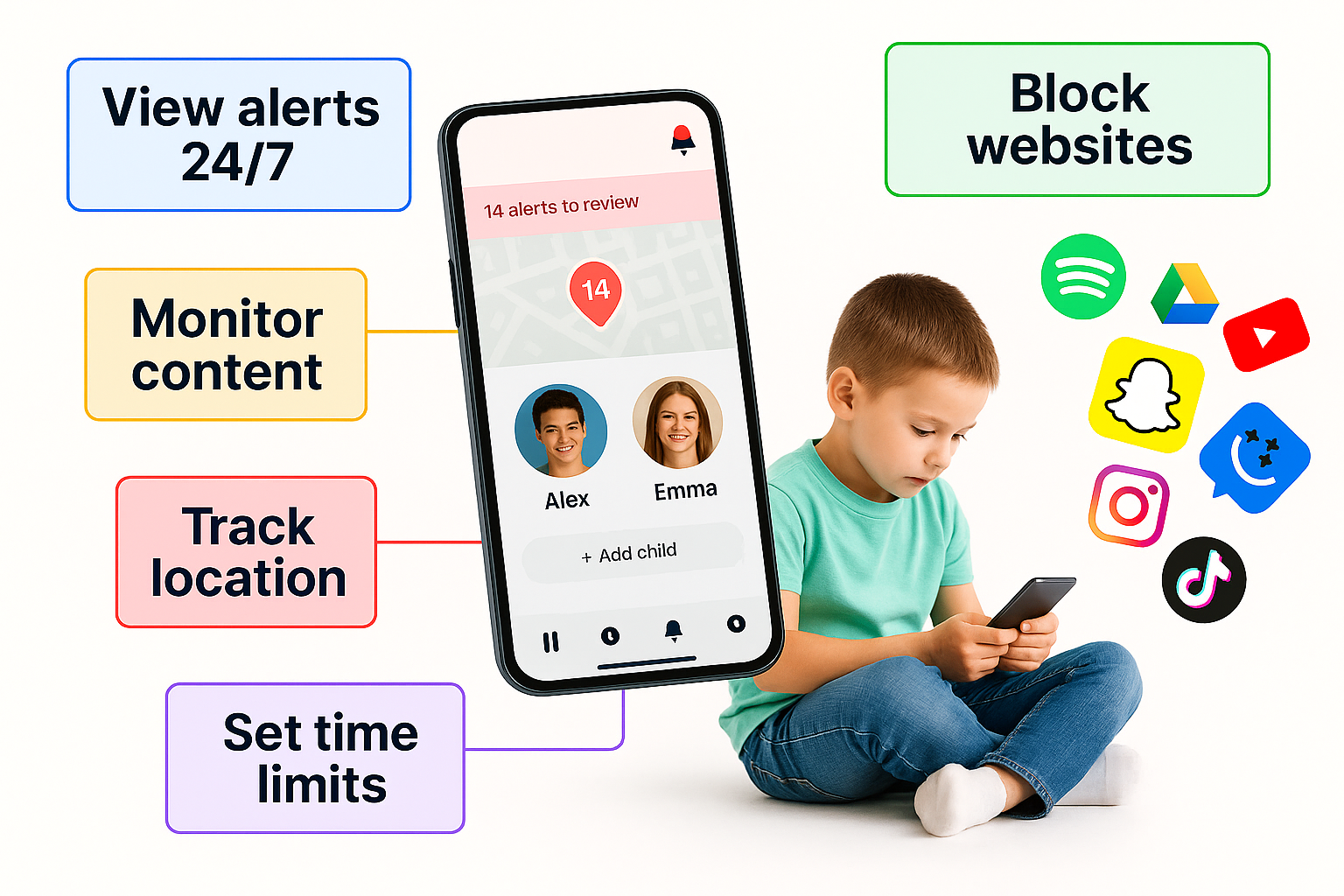When the Phone Became the Homework Monitor, the Playmate and the Bully: One Family’s Wake‑Up Call
We think of smartphones and smartwatches for kids as “just tools” — helpful for safety, communication, school. But what if the very device meant to help becomes the monitor, the distraction, even the bully? That’s what happened to the Carters. At first it seemed like everything was fine: their 11‑year‑old daughter Mia had a phone so she could call friends after school, a watch so they could check her location, and the family felt more connected. But over time the device took on roles nobody planned.
The Unexpected Shift
At first, Mia used the phone for texting and homework apps. Then games. Then scrolling. Then when she wasn’t playing, she was hiding the phone under covers at night. The smartwatch, designed for safety and quick calls, became the “who sent me a message” tracker. A device originally meant for connection started to feel like a leash.
Mom and Dad noticed:
- Mia’s grades slipped. Not dramatically, but enough to raise concern.
- At dinner, she was often distant, checking her watch.
- There were secret group chats. Things whispered rather than spoken.
- The playtime and reading rituals disappeared.
And something else: they felt powerless. They hadn’t handed her a device and expected perfection. They thought a kids’ phone with controls would keep everything safe. But they underestimated the digital habits—and the shifting goalposts of what “normal use” looked like.
The Wake‑Up Call
The Mom (Claire) realized something needed to change after a Saturday morning. She found Mia quietly leaving her smartwatch in her bag and using a borrowed tablet instead — unsupervised — in the basement. It wasn’t just about disobedience. It was about avoidance.
That afternoon, Claire sat down with Mia. No yelling. No threats. Just a question: “What do you feel when you use your devices?” The answer was wrenching: “I feel like I’m missing out if I’m not on. But if I am, I’m missing being here.”
That admission rocked the house.
The Strategy That Worked
They decided on a three‑phase plan:
1. Reset the technology:
They replaced Mia’s phone with a kids’ smartphone built strictly for communication, homework and a few approved apps. Social media and unsupervised browsing were removed. The smartwatch stayed, but they updated its rules: it was for location and urgent calls only after school.
2. Create new rituals:
- Phone and watch were off and charging in the living room after 8 pm.
- No devices at dinner. Every night, the family shared one “offline win” of the day.
- One weekend each month was “tech‑lite” — board games, nature, conversation. The phone was carried only for emergencies or coordination.
3. Teach digital awareness and self‑regulation:
They had chats not about rules but about why. For example:
- Why do notifications pull us in?
- What happens when you scroll late at night?
- How do you recognize when you feel drained by tech?
Mia helped draft the “family tech contract” and chose two fun apps she could keep.
The Results
Months later:
- Mia’s homework got back on track. Her attitude improved.
- At dinner, laughter came back. Her smartwatch buzzed less.
- She drew again, walked the dog, and asked to go over friends’ houses instead of staying online.
- Mom and Dad felt less like monitors and more like guides. Tech was no longer separate—it was part of family life.
What This Means for You
If you’re reading this, maybe you’re sensing the shift too:
- The device you gave for safety might now be shaping habits you didn’t intend.
- It’s not about banning phones or watches—it’s about choosing how they fit.
- Starting small, resetting, involving your child in decisions builds trust and cooperation.
- Technology can be a bridge and a boundary—it depends on how you use it.
Practical Takeaways
- Before you give a device (or rethink one), ask: What do we want it to do—and what do we want it to prevent?
- Define “offline” zones and times in your home: meals, before bed, family outings.
- Choose devices with controls that match your child’s maturity—not peer pressure.
- Don’t just set limits—have check‑in conversations. What’s working? What feels fun? What feels like a burden?
- Make the device part of your family story—not just a tool for your child.
Phones and smartwatches are not the enemy. They’re part of the world your child will live in. The trick isn’t to pretend they don’t matter—it’s to help your child matter in how they use them. The Carters changed their tech plan and ended up changing family dynamics for the better.
If you feel uneasy about your child’s device use, you’re not imagining it. You're not overreacting either. One honest conversation, one structured reset, one tech plan that fits your family—and you may find connection, freedom and balance where you least expected.

